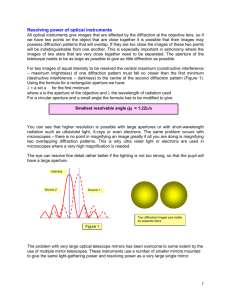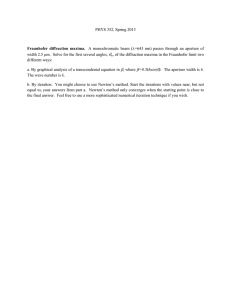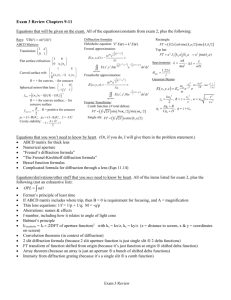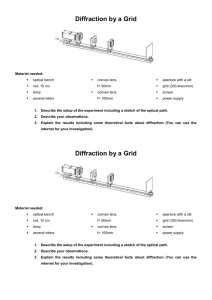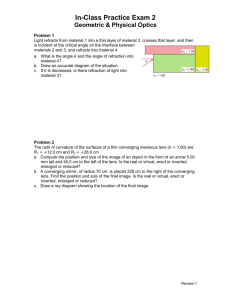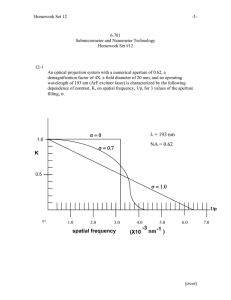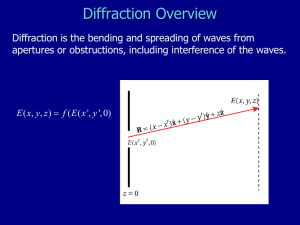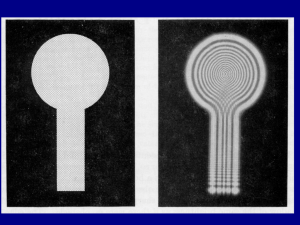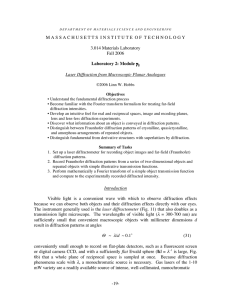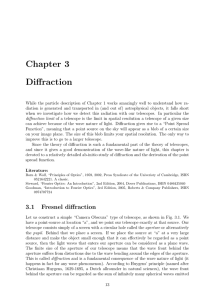HOMEWORK SET #2 3.
advertisement
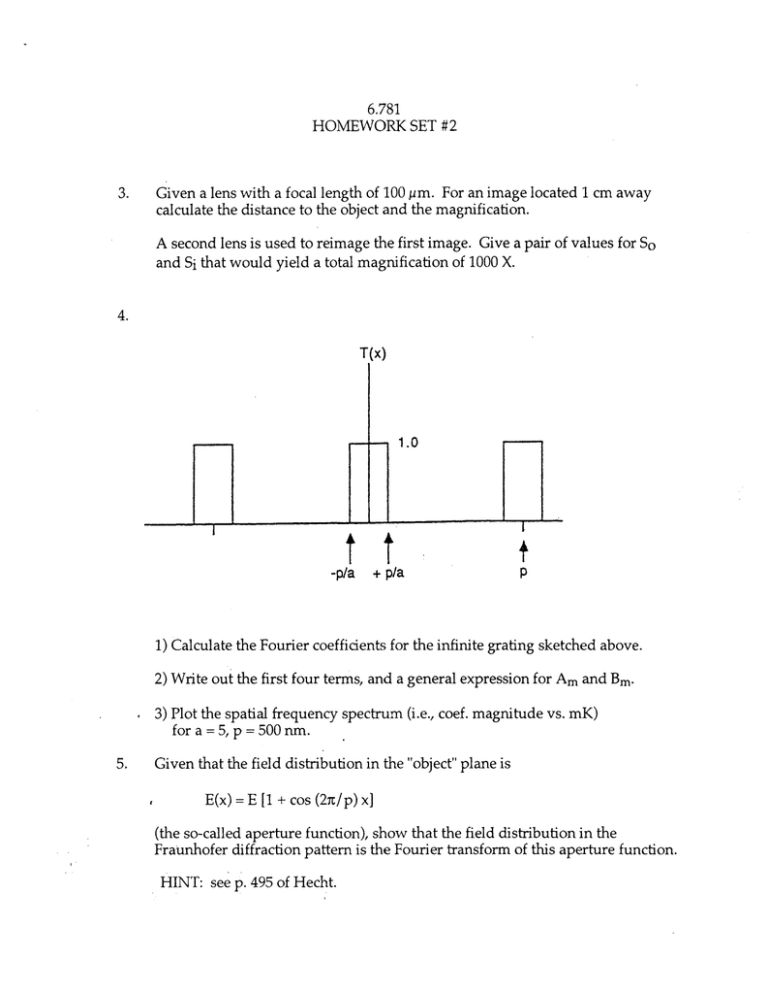
6.781 HOMEWORK SET #2 3. Given a lens with a focal length of 100 tm. For an image located 1 cm away calculate the distance to the object and the magnification. A second lens is used to reimage the first image. Give a pair of values for So and Si that would yield a total magnification of 1000X. 4. T(x) I I - 1- I.Un 4 i L-j I I I I I I -~~ I t + tp/a -p/a P 1) Calculate the Fourier coefficients for the infinite grating sketched above. 2) Write out the first four terms, and a general expression for Am and Bm. 3) Plot the spatial frequency spectrum (i.e., coef. magnitude vs. mK) for a = 5, p = 500 nm. 5. Given that the field distribution in the "object"plane is E(x) = E [1 + cos (2I/p) x] (the so-called aperture function), show that the field distribution in the Fraunhofer diffraction pattern is the Fourier transform of this aperture function. HINT: see p. 495 of Hecht. Note also: ) ,00 ei (k - k')x dx = 2t65(k - k') where 8(k - k') is the Dirac delta function. 6. The famous photographer, Ansel Adams, initiated a technique in which a very small aperture (f# = 64) was used to achieve large depth-of-focus in f/D ~ 1/2NA, where D is the lens diameter). In this photography. (f# way essentially everything in a photograph would be in focus, no matter how near or far away. At an f# of 64 what is the minimum resolvable spatial period? What size film would be needed to record a 1000line scene (e.g., 1000 slats of a distant snow fence on a Montana landscape?) What size for a 10,000line scene? 7. Calculate the resolution of a "camera" having a diameter of 4 meters located 100 km above the earth. What is the finest detail at the earth's surface that can be resolved. 8. The attached sheet depicts a diffraction pattern projected onto a wall located 10 meters distant when an object is illuminated by a HeNe laser (lambda = 632.8nm). The dimensions on the array of diffraction spots are indicated. The object is a glass plate with a pattern in opaque chromium, similar to what was demonstrated in class. The intensities of the diffraction spots are left-right symmetric and are as follows: spot identification # relative intensity 0 1.0000 1 0.4053 2 3 · 0.0000 0.0450 4 0.0000 5 6 7 0.0162 0.0000 0.0083 Identify the type of pattern that is on the object, giving the dimensions. No need to draw it, although you may do so. From the relative intensities you should be able to give the actual widths of the features on the object. -7 -7 -5 -5 -4 4 -3 -3 -2 -2 -1 - 0 0 6 +1 +1 +2 +2 +3 +3 4 +4 +5 +5 +6 +6 +7 +7 -7 -6 -5 -4 -3 -2 -1 0 +1 +2 +3 +4 +5 +6 +7 I meter 10 cm *o -7 @0 *o o * o e* -6 -5 -4 -3 -2 -1 0 +1 +2 +3 +1 +2 +3 +4 +5 +6 * ', +7 Central spot *0 0 o··0 -7 -6 -5 -4 -3 -2 -1 0 ·0 +4 +5 0o +6 +7 0O00*·· * * 00·0 -7 -6 -5 -4 -3 -2 0O 0000 -7 -6 -5 -4 -3 -2 -1 0 -1 0 +2 +3 +4 +5 0 00 0 +1 +2 +3 +4 +5 +6 +7 +6 +7 6.781. #9.97
